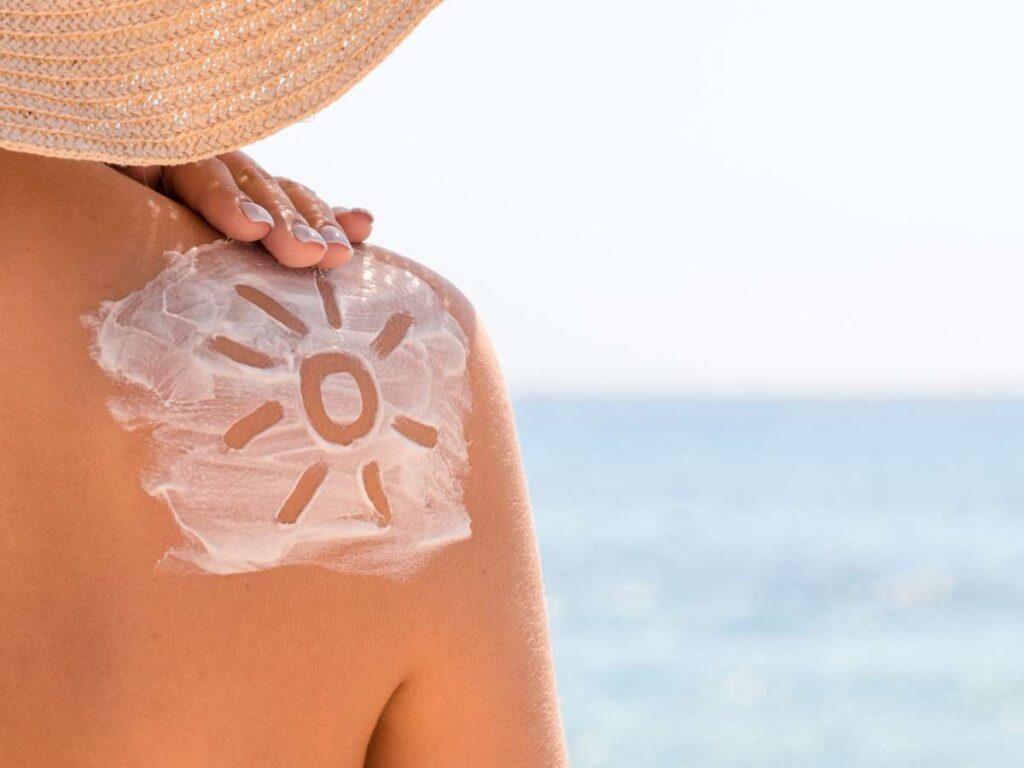How Often Should You Reapply Sunscreen?

Author: Tommy Tang | Founder at Ridgepole
Hi, I'm Tommy Tang, here to share my expertise in skincare with you.
Table of Contents
I used to think applying sunscreen once was enough. I’d put on SPF 50 in the morning, spend hours outside, and assume I was protected.
Then, after too many sunburns and frustrating product tests, I realized something—sunscreen doesn’t last as long as most people think.
This is a major issue for both consumers and brands. If people don’t reapply, they end up with sun damage and start questioning the effectiveness of the product. That’s why reapplication-friendly formulas and clear consumer education matter.
In this article, I’ll break down how often sunscreen really needs to be reapplied, what factors impact its longevity, and how brands can create sun care products that actually deliver on their promise. By the end, you’ll have a clear strategy to improve your product line and consumer trust.
Let’s dive in!
1. Understanding Sunscreen and SPF
Sunscreen is a vital tool for protecting the skin from the sun’s harmful ultraviolet (UV) rays. Understanding how sunscreen works and the significance of Sun Protection Factor (SPF) can help in choosing the right protection.
What is SPF?
SPF stands for Sun Protection Factor. It measures how well a sunscreen protects the skin from UVB rays, which are the main cause of sunburn. For example, using SPF 30 means it will take 30 times longer for the skin to burn than it does with no sunscreen applied.
Types of Sunscreens
There are 2 main types of sunscreens:
- Chemical Sunscreens: These contain organic compounds that absorb UV radiation and convert it into heat, which is then released from the skin. They are often preferred for daily use due to their lightweight feel.
- Physical (Mineral) Sunscreens: These use natural minerals like zinc oxide or titanium dioxide to reflect and scatter UV radiation away from the skin. They are less likely to cause skin irritation and are often recommended for sensitive skin.
Choosing the Right SPF
Higher SPF numbers indicate greater protection. However, no sunscreen can block all UV rays. SPF 30 blocks about 97% of UVB rays, while SPF 50 blocks about 98%. It’s important to select a sunscreen with an appropriate SPF for your skin type and exposure level.
Remember, using sunscreen correctly helps protect your skin from damage and reduces the risk of skin cancer.
2. Factors Affecting Sunscreen Efficacy
Sunscreen effectiveness can be influenced by several factors. Understanding these factors helps ensure proper sun protection. Certain conditions, activities, and environmental elements can reduce the ability of sunscreen to protect the skin.
Water and Sweat Exposure
Water and sweat can wash away sunscreen, even if it is labeled as water-resistant. Sunscreen needs to be reapplied more frequently when swimming or sweating heavily. Water-resistant formulas provide protection for either 40 or 80 minutes before reapplication is needed. Drying off with a towel can also remove sunscreen, making reapplication necessary.
Time Spent Outdoors
Longer exposure to the sun increases the need for reapplication. Sunscreen typically lasts about two hours under normal conditions. However, if exposure extends beyond this time, additional application is required to maintain protection. Activities such as hiking, running, or playing sports may cause sunscreen to wear off faster due to sweat and friction.
UV Index and Environmental Conditions
The strength of UV rays changes throughout the day and varies by location. A higher UV index means a greater risk of sunburn and skin damage. UV exposure is strongest between 10 a.m. and 4 p.m., requiring extra caution. Factors such as altitude and reflective surfaces like snow, sand, or water can increase UV intensity, making sunscreen reapplication even more important.
Application Method and Amount Used
The effectiveness of sunscreen depends on how much is applied and how evenly it is spread. A thin or uneven layer may not provide full protection. For the face and body, at least one ounce (about a shot glass full) is recommended. Missing areas such as ears, the back of the neck, and tops of feet can leave skin vulnerable to damage.

3. Guidelines for Reapplying Sunscreen
Sunscreen needs to be reapplied throughout the day to maintain its effectiveness. Over time, factors such as sweat, water, and environmental exposure can cause sunscreen to wear off, reducing its ability to protect the skin. Regular reapplication is necessary to ensure continuous coverage and prevent sun damage.
General Reapplication Rule
- Apply sunscreen every 2 hours when spending time outdoors, even if the weather is cloudy. UV rays can penetrate through clouds and still cause skin damage.
- Reapply immediately after swimming, sweating, or towel drying, as these activities remove sunscreen from the skin. Even water-resistant formulas lose their effectiveness after a certain period.
- When staying indoors near windows, reapplication may still be necessary if there is prolonged exposure to natural light.
When to Reapply More Frequently
Certain situations require sunscreen to be reapplied more often than the standard two-hour guideline:
- Water activities: Water-resistant sunscreen lasts 40 to 80 minutes, depending on the formulation. After that, a fresh layer is needed to maintain protection.
- Physical activity: Sweat can break down sunscreen and reduce its effectiveness. Those engaging in outdoor exercise, hiking, or sports should reapply frequently.
- High UV exposure: On days with a high UV index, sunscreen may wear off faster, increasing the need for reapplication. Sunlight is strongest between 10 a.m. and 4 p.m., making extra precautions necessary.
- Contact with clothing or towels: Sunscreen can rub off when wiping sweat, drying off after swimming, or changing clothes. A new layer should be applied to ensure full protection.

4. Practical Tips for Effective Sunscreen Use
Using sunscreen correctly is essential for maximum protection. Even the best sunscreen will not work if it is not applied properly or frequently enough. Following these simple tips can help improve sun protection and prevent skin damage.
- Choose the right sunscreen. A broad-spectrum sunscreen with SPF 30 or higher provides the best protection. Water-resistant formulas are ideal for outdoor activities, swimming, or sweating.
- Apply sunscreen generously. Using too little reduces its effectiveness and leaves skin exposed. About one ounce, or a shot glass full, is needed for full-body coverage.
- Cover all exposed areas. Sunscreen should be applied to the face, ears, neck, hands, and feet. Areas like the scalp and lips also need protection, using SPF-infused products.
- Apply sunscreen before sun exposure. It should be applied at least 15 to 30 minutes before going outside. This allows the ingredients to bind properly to the skin for full protection.
- Reapply sunscreen regularly. Sunscreen should be reapplied every two hours to maintain its effectiveness. More frequent application is needed after swimming, sweating, or towel drying.
- Use the right type of sunscreen for the situation. Lotions provide even coverage and are best for initial application. Spray and stick sunscreens are useful for quick touch-ups throughout the day.
- Check the expiration date. Expired sunscreen may not provide full protection against UV rays. Most sunscreens last about three years, but heat exposure can shorten their effectiveness.

5. Addressing Specific Scenarios
Sunscreen use can vary depending on specific situations. Different environments, activities, and skincare needs require adjustments in application and reapplication methods. Understanding how to adapt sunscreen use ensures continuous protection:
Sunscreen and Makeup
Applying sunscreen under makeup helps maintain UV protection throughout the day. A lightweight, non-greasy sunscreen works best as a base layer before foundation. For reapplication, SPF-infused setting sprays or powder sunscreens can be used without disrupting makeup.
Sunscreen for Sensitive Skin
People with sensitive skin should choose mineral sunscreens with zinc oxide or titanium dioxide to minimize irritation. Fragrance-free and hypoallergenic formulas help prevent allergic reactions or breakouts. Patch testing a small amount of sunscreen before full application ensures compatibility with the skin.
Sunscreen for Outdoor Activities
High-intensity activities like swimming, running, or hiking require water-resistant sunscreen for long-lasting protection. Reapplication should be done more frequently, especially after sweating or exposure to water. Using stick or spray sunscreens makes it easier to reapply while on the go.
Conclusion
Through my years of working with sun care brands, one truth stands out—sunscreen is only as effective as its reapplication.
Developing sunscreens that people actually want to reapply has been a game-changer.
At Ridgepole, we’ve helped brands create sun care products that people trust and love to use. Whether it’s advanced UV-blocking technology, private labeling, or customized formulations, we ensure that every product meets real-world demands.
Let’s create sunscreen that works as hard as your customers need it to.
Contact us today to develop premium, high-performance sun care solutions tailored to your brand’s success!
Explore More Helpful Resources
Not quite what you’re looking for? Explore our wider product range for more choices:
Still haven’t found what you’re looking for? Don’t hesitate to contact us. We’re available around the clock to assist you.
Quick Quote
Own Your Private Label Cosmetic Line Is No Longer Difficult Here!





